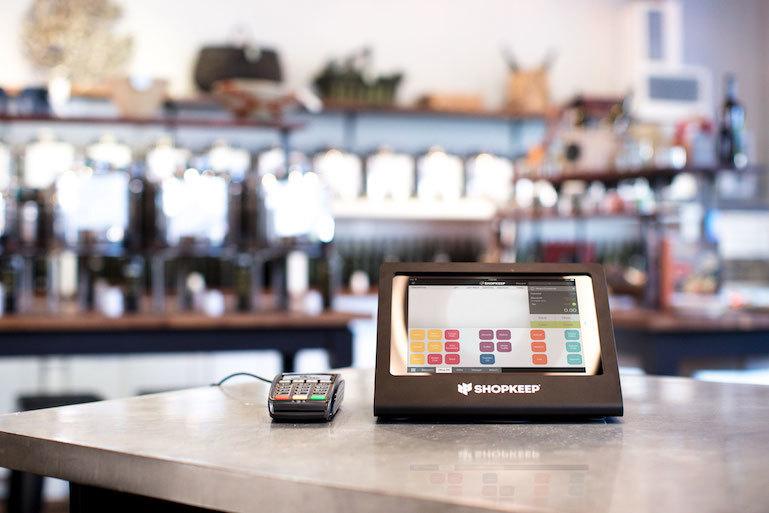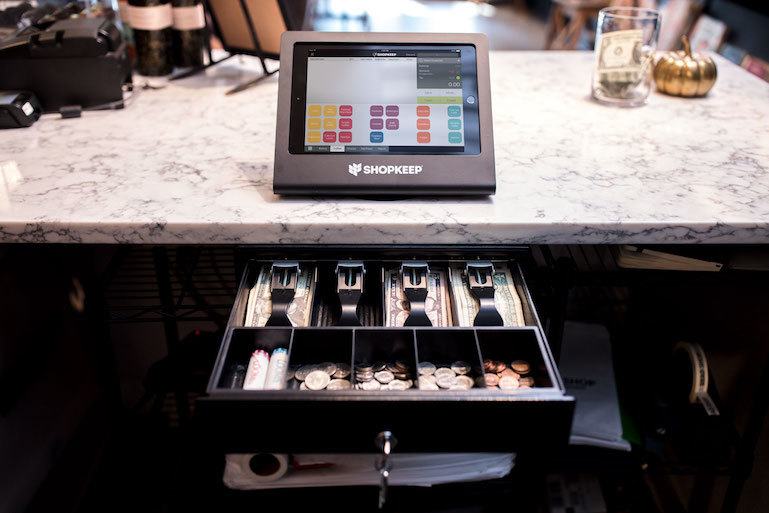
How to Pick the Right Retail Management Software
Running a retail business is hard; no one is debating that. But there is a debate raging, and it’s all about finding the right retail management software.
The correct retail store management system can streamline the way your business operates so that you can focus on the more important strategic aspects of running your store. To get started, retail management software is a set of applications used to manage different aspects of a retail business. Each of these different parts works together to support the internal workings of your business. Sounds simple enough, right? The problem is that there are so many different types of retail management software out there. And functionality isn’t universal across the board. This can make what should be a simple decision pretty confusing.
To pick the right solution for your business, you’ll need a firm understanding of the goals you expect retail management software to help you achieve, along with the specific features that will get you there. That’s what we’re aiming to accomplish with this article. We’ll take you through the main components of retail management software, discuss the major features to look for, and recommend a few vendors for you to check out.
Key Components of Retail Management Software
Retail management software (RMS) acts as a one-stop-shop for all the systems that manage your internal operations. This includes functions like tracking inventory and sales reports. While there are enterprise level ERPs and other systems available, for most small and mid-sized businesses, a modern POS system will offer all of the retail management capabilities needed. In fact, modern POS systems like ShopKeep, Square, and Vend fall firmly under the umbrella of retail management software.
With that in mind, let’s look at the main capabilities of RMS:
Point of Sale (POS)
The transaction center of your business. Your actual POS terminal feeds all the necessary information (sales transactions, customer information, updated inventory counts) into the overall system. Your RMS then turns this raw data into meaningful reports via analytics, powers your inventory management capabilities, creates customer records, and more.
Ecommerce
An online presence can do wonders for a business by creating relationships with people who otherwise live too far away to come to your store. The convenience of online shopping can also help you maintain or even strengthen your relationships with the customers you already have. Lastly, when utilized correctly, ecommerce can be a huge driver of sales and increased profitability for your business.
Analytics and Reporting
The analytics and reporting capabilities of RMS are one of the main reasons to use this kind system in your business. Reporting allows you to understand and manage everything from inventory to employee hours to sales performance. Getting this kind of information without an RMS requires manually updating spreadsheets and building complex pivot tables.
Customer Relationship Management (CRM)
These are capabilities related to how you contact and market to your customer base. This includes initiatives like loyalty programs, email newsletters, tracking purchase history, and even storing accurate contact information. Being aware of how your customers interact with your business can help you build strong, long-lasting relationships.
It’s important to note that a key characteristic of RMS is that all of the different capabilities connect, informing one another. When you make a sale online, that action updates your inventory count, sends fresh data to your analytics, and could even create a new customer record. With your tools connected, you have a greater ability to run an efficient and productive business than you would otherwise.
Why Your Business Needs CRM
Before I get into the benefits of using RMS, I want to touch on CRM, because I’m betting it’s a new term for most small business owners. Although, you may be doing CRM already without even realizing it.
To give your business the best shot at success, you need to ensure you build a relationship with your customer base. And that’s more involved than just knowing regulars by face. You have to actively engage with your customers even when they aren’t in your store. Doing so gives your one-time customers a reason to become regular shoppers.
You can do this in a few different ways. One of the most common is through email campaigns. An email can act as a reminder to a customer that they should come back to your store. These emails can share helpful content, recommend products based on past purchase history, or advertise a store-wide sale. The possibilities are endless, but the key to success is in the message.
You want to ensure that your emails are as relevant and targeted as possible. That’s customer relationship management. Sending highly relevant messages makes your customers feel like you care about them. Think about your own shopping experiences. How do you feel when a brand recommends a product to you that you absolutely love? You’re probably far more likely to go back to that store. That’s the power of CRM.
Also, consider loyalty programs. These can be even more effective than email campaigns because they are directly tied to the point of purchase. Plenty of big companies have loyalty programs that give their customers prizes or discounts for being a continuous customer. Kohl’s department store, for example, has a points program that provides customers with a five dollar coupon for every 100 points they earn. Any small business could easily employ something similar with a punch card system.
Paid loyalty programs can also be beneficial, too. Amazon Prime is probably the most popular paid membership program out right now, and it fueled the growth of the company. Amazon Prime customers spend almost twice as much as regular customers on the Amazon website.
Targeted email marketing and loyalty programs are both great ways to build customer relationships and loyalty. As far as CRM functionality in your RMS goes, you will want to ensure that your tool gives you the ability to build customer profiles. This profile will store data like purchase history, loyalty program membership stats, and as well as demographic data and contact information. You can then use this data to inform your email campaigns, loyalty program, and other marketing tactics. You could even use it to guide conversations with customers when they’re in their store.
SEE ALSO: 5 Ways Your POS Software Can Improve Your Customer Service
Benefits of Retail Management Software
Using retail management software helps you stay in control of your business. It enables you to track and manage all the significant aspects of your business with one system. Think of it like an assistant that focuses on the numbers and back-of-house operations. Most modern RMS solutions are easy to use, helping to eliminate the mistakes staff can make recording information manually.
With that overview in mind, let’s take a look at some of the most popular RMS systems available, as well as the unique benefits of each.

ShopKeep Point of Sale
ShopKeep is the #1 tablet point of sale system. It features an easy to use layout and straightforward design to help business owners with any level of experience get on their feet. Merchants can use the management portal, BackOffice, to access additional RMS features like reporting and eCommerce, as well as inventory and employee management.
Here are some of ShopKeep’s specific benefits:
Track Inventory
Every time a transaction takes place, ShopKeep will automatically update your inventory counts. This makes it easy to identify your stock levels at a glance quickly. You can set reorder triggers so you never run out of popular items, track your margins with powerful reporting, and use matrix inventory to manage complex catalogs. You can even manage large inventories quickly with bulk updates via CSV files.
Manage and Track Employees
Instead of using a separate time clock, your employees can clock in and out straight from the POS. This allows you to track their hours to calculate payroll accurately. Plus you can identify who your top and worst performing employees are to staff them appropriately.
Ecommerce
ShopKeep’s integration with BigCommerce means that everything you sell with ShopKeep you can also sell online. You can sell merchandise 24/7 to anyone around the country, or even across the world. Since everything syncs together, whenever you sell a product online or in-store, your inventory is automatically updated in both systems.
Manage Customer Relationships
Add customers to your POS to make future transactions quick and easy. You can save information to their profile, email them receipts, and view their purchase history. With this data in one central place, it’s easier to build strong relationships with customers that make them more likely to revisit your store.
Analytics and Reporting
ShopKeep’s powerful reporting gives you deep insight into the performance of your business. Easily see how well your items are selling, track your profit margin by item, identify your most frequent customers, and more, straight from your POS.
Email Marketing
ShopKeep’s integration with MailChimp gives business owners another avenue to grow their brand, build customer relationships, create repeat business, and see an increase in profits.
ShopKeep Pocket
Business owners can keep track of their businesses even if they’re away from the physical location. ShopKeep Pocket is an app that you can download to any mobile device. See what sales have taken place, which employees have clocked in, how many customers you’ve had, and more.
Works on iOS and Android
Both ShopKeep’s POS software and Pocket App work on Android and Apple products, giving you maximum flexibility.
Square for Retail
Square is a mobile payments provider that now has a full POS system and hardware options for retailers. Their software has a simplistic interface that makes it easy for anyone to start making sales. There are more affordable options on the market, though. Square’s flat rate payment processing fees aren’t the most affordable option for many types of businesses, so that’s one big complaint against them.
It’s also important to note that Square is a payment processor first and a retail POS second. It was initially designed to give anyone the ability to take credit card payments with ease. As its customer base grew, they added additional POS functionality to meet demand. Because of this, Square doesn’t have all of the capabilities that a larger, more established business needs from RMS.
Lastly, because of the way that Square approves merchants for its payment processing service (mandatory if you want to use them), there can be issues around withholding funds. Specifically, you need to be cautious of any spikes in sales. If Square’s system identifies a substantial increase in sales from you, it’s likely that they will put a hold on your account making it difficult for you to access the money you’ve earned. The unusual sales activity is a sign to Square of sales activity that appears fraudulent, even if it isn’t. This can be especially problematic for businesses running big promotions or experiencing a sales spike due to changes in seasonality.
Altogether, this makes Square a good fit for small hobbyist businesses that only need to process sales every now and then. If that sounds like your business, you really don’t need a full suite of retail management software anyway. But if you plan on growing your business into something larger, it makes sense to consider a more robust option from the start.
SEE ALSO: How is ShopKeep Different from Square?
At the end of the day, picking retail management software is a serious decision that will affect both the short term and long term success of any business. When making your decisions, consider the business you have today, as well as where you want to take it in the future. Where are your weak points? What can be improved? What are you doing well that you can double down on? How can software help you find or continue your success? Answer those questions and you’ll be well on your way to picking the right retail management software for your small business.
Want to try ShopKeep for yourself?
Just answer a few easy questions.
Need help finding the right point of sale?
Just complete the form. We’ll call you right back to explain how ShopKeep can work for you.
Hit the ground running.Sprinting, in fact!
Read our free, comprehensive guide, Small Business 101, to learn all you need to know about starting a thriving business.

